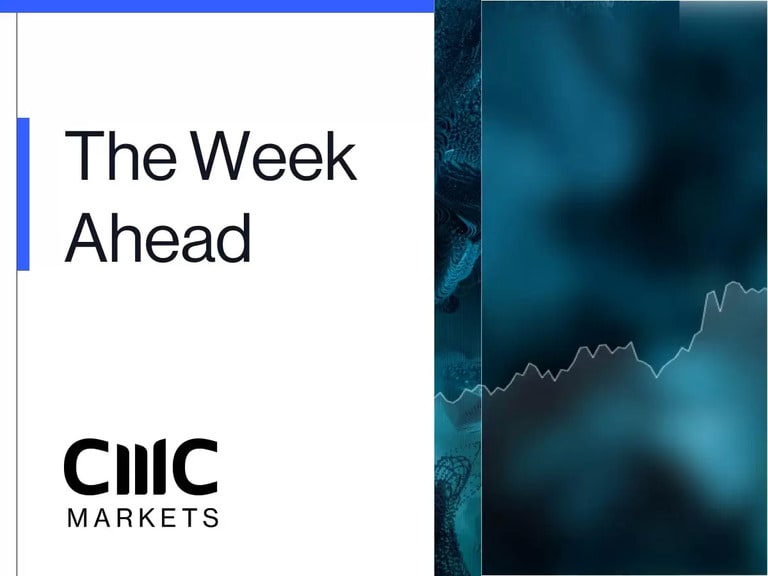US markets had another mixed close yesterday, only this time it was the S&P 500 and Nasdaq that finished the day lower, while the Dow and Russell 2000 finished higher. Despite the mixed close, the S&P 500 and Dow still managed to post new record highs.
Coinbase finished its first day of trading, closing at $328, below its opening price of $381, and after peaking at $428 in the first few minutes of trading.
Earlier in the day European markets also had another mixed session, with the FTSE 250 closing at a new record high, and the FTSE 100 outperforming on the back of a big rise in basic resource stocks, led by the likes of BP and Royal Dutch Shell, and an oil price that finished 4% higher on the day, after bigger than expected falls in weekly inventories. Today’s European open looks set to be a mixed affair following in the footsteps of Asia markets, which are being held back by weakness in Chinese markets.
At the beginning of the week there was plenty of speculation that a hot reading on US CPI might give added fuel to the inflation bulls, and in doing so give policymakers at the Federal Reserve some food for thought. This was never really likely given that the March CPI numbers were always going to be on the high side, given that a year ago the US economy was put into lockdown, thus introducing a deflationary shock on prices, which is only now starting to reverse. It will probably need a much more sustained recovery in prices over the next few months before markets become too concerned, however there are still plenty of warning signs in the recent data, due to various supply chain disruptions.
Today attention returns to US retail sales for March, as well as the latest weekly jobless claims numbers which have seen a couple of weeks of increases in the headline numbers. These increases have run counter to the prevailing narrative of a rapidly recovering labour market, serving to raise eyebrows, however as with any weekly data set, it's important not to get too carried away with these sorts of swings. This type of data tends to get revised constantly and as such is likely to swing quite sharply in either direction. Expectations are for a decline from 744,000 to 700,000.
Away from the weekly jobless claims, it's the March retail sales data that is more likely to move the market. In the last 12 months, US consumers spending patterns have increasingly been driven by the issuance of stimulus payments. We saw it in the first lockdown with the CARES Act economic impact payments of $1,200 per adult, plus $500 per qualifying child, and then again in late December with the payment of an additional $600 per eligible individual. In the ensuing months retail sales surged sharply, by 17.5% in May 2020, and then by 5.3% in January 2021.
Since that January rebound in consumer spending the economic outlook has shifted markedly, helped by a recovering labour market, a surge in consumer confidence, an accelerated vaccine rollout, as well as new stimulus payments of $1,400 per person, that were signed off in March, and which are expected to have a similar effect to the ones we saw in January. This renewed optimism is expected to manifest itself in another strong month, with retail sales estimates averaging at around a 5.8% gain, more than reversing the 3% decline in February.
There are some who are suggesting that this estimate might be too conservative, and that we could see a number in the region of 10%. Given the size of the stimulus payments seen in March, it's certainly in the realms of possibility, with the only unknown being as to how sustainable the rebound in consumer spending will be, and whether it can extend into Q2.
EUR/USD – this week’s move through the 1.1930 area opens up the prospect of a move towards the 1.2000 area, and possible even higher towards 1.2150. Support comes in at the 1.1860 area and the lows of the last three days.
GBP/USD – yesterday saw the pound edge higher, however we need to move through the 1.3830 area to signal the potential for a base and a move back towards 1.4000. We still have fairly decent support at the 1.3670 area, however a break below 1.3650 could well signal further losses towards 1.3550.
EUR/GBP – while below the 0.8730 area the bias remains towards the downside. We still have decent support above the 0.8620 area. A move below 0.8620 and the 0.8600 area retargets 0.8540.
USD/JPY – finding support above the 108.70 area, and while this holds we can still see a retest of the 110.00 area to retarget the recent highs at 110.96. Below 108.70 retargets the 108.20 area.
CMC Markets erbjuder sin tjänst som ”execution only”. Detta material (antingen uttryckt eller inte) är endast för allmän information och tar inte hänsyn till dina personliga omständigheter eller mål. Ingenting i detta material är (eller bör anses vara) finansiella, investeringar eller andra råd som beroende bör läggas på. Inget yttrande i materialet utgör en rekommendation från CMC Markets eller författaren om en viss investering, säkerhet, transaktion eller investeringsstrategi. Detta innehåll har inte skapats i enlighet med de regler som finns för oberoende investeringsrådgivning. Även om vi inte uttryckligen hindras från att handla innan vi har tillhandhållit detta innehåll försöker vi inte dra nytta av det innan det sprids.






